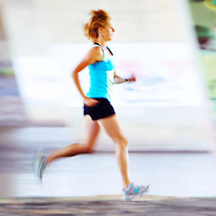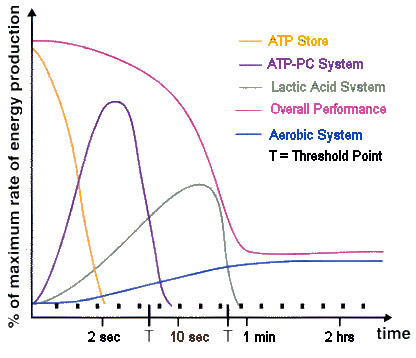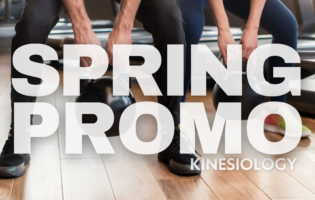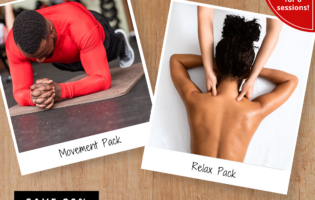Total Therapy Blog
Gearing Up for the Run… Run Longer and Faster
 Welcome to our third part of “Gearing Up for the Run”. We are excited for the upcoming Vancouver Sun Run and hope you are too! In the up-coming weeks, we will focus our energy on getting ready for the run. Last article, we talked about progressive overload and training tips for new runners. This week, we’ll cover training principles for more advanced runners. If you fall into this category, you’ve already made it through the first race! Now you’re looking to do it again, but faster. In honour of the Vancouver Sun Run, let’s talk about training for a 10 km race. Hold onto your hats, ladies and gentlemen, we’re about to delve into the wacky world of metabolism.
Welcome to our third part of “Gearing Up for the Run”. We are excited for the upcoming Vancouver Sun Run and hope you are too! In the up-coming weeks, we will focus our energy on getting ready for the run. Last article, we talked about progressive overload and training tips for new runners. This week, we’ll cover training principles for more advanced runners. If you fall into this category, you’ve already made it through the first race! Now you’re looking to do it again, but faster. In honour of the Vancouver Sun Run, let’s talk about training for a 10 km race. Hold onto your hats, ladies and gentlemen, we’re about to delve into the wacky world of metabolism.
Running a 10 km race requires a unique mix of metabolic systems, or how your body generates energy to move. It’s critical to think about metabolism if you’re looking to run faster – running faster requires your body to create more energy, more efficiently. In general, your body has three ways (or “gears”) of getting energy:
- 1st Gear: Creatine-phosphate system: This is your “power burst” system. Think an all-out sprint for 10s – this system generates a lot of energy fast. However, it also burns out fast – that’s why you can only sprint for short distances.
- 2nd Gear: Lactic acid system: This is your “speed” system. This is more for things that require speed over a longer distance – like a 400 or 800 m dash. It lasts longer than your creatine-phosphate system, but it too will stop working once you reach your lactic acid threshold –the point where your body won’t tolerate any more lactic acid build-up.
- 3rd Gear: Aerobic system: This is the “slow and steady” system. You won’t go anywhere fast using it, but you’ll be able to go for hours and hours (think marathon). This system uses oxygen exclusively, hence the name aerobic.

Got the gears? Great! Let’s discuss how this fits into your training. The 10 km requires a mix of aerobic and lactic acid systems. You’ll need to push close to your lactic acid threshold to increase your pace, while still using the aerobic system to make sure you have enough gas in the tank to cross the finish line. In training terms, this translates to a mixed program that works on both systems. The next bit provides you with a template on how to train these systems. Incorporate these ideas into your weekly routine, and you’ll be in good shape for race day!
Long and Slow
These runs work on your aerobic capacity. Focus on a long-distance run at a slow and steady pace. Settle into a comfortable pace that you feel you could easily maintain for an hour. Break up each 10 minute interval of running with a 1 minute walk (check out this link for more info on why walk/run is good for your training: Link)
Increase the total distance gradually each week. In general, we recommend using the 10% rule (increase your mileage by no more than 10% each week).
Short and Quick
This works on your lactic acid system, building up your body’s tolerance for lactic acid, and its ability to clear it from the muscles. In this, you’re aiming for the out-of-breath, tired muscles feeling. Try a 400m run program, where you run once around the track at your top pace, and repeat in sets with a rest interval in between. For example:
- 5 x 400m dash; 1 min rest interval in between; 3 sets (4 min rest between sets)
You can progressively shorten the rest intervals as your threshold gets higher. You can also increase the number of repetitions. Do NOT do the “Short and Quick” program on consecutive days – your body will need rest between these sessions to build muscle.
Steady Runs
For this, you run the race distance at a steady pace (predominantly aerobic, some lactic acid system). This is faster-paced than the “Long and Slow” run, but below your race-day pace. The aim here is to improve your pace judgment (so you don’t start too fast on race day), build your stamina, and boost your confidence. You want to feel comfortable with the distance.
 Overall, you want to have a diverse program that targets the two main energy systems we’ve described above. If you’re uncertain what to do, check out your local running group, physiotherapist, or kinesiologist – they can work with you to develop a plan, keep you on track with your training, and adjust the plan as needed.
Overall, you want to have a diverse program that targets the two main energy systems we’ve described above. If you’re uncertain what to do, check out your local running group, physiotherapist, or kinesiologist – they can work with you to develop a plan, keep you on track with your training, and adjust the plan as needed.
Training can be demanding sometimes, but you’ll reap the benefits when you cross the finish line on race day. What tricks do you use to get through a tough session when you don’t feel like doing it? Share with us in the comment section below and on Facebook!








Follow Us!
& Stay Up To Date
BLOG